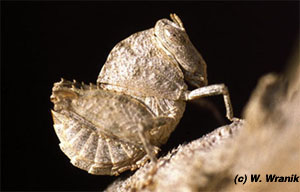Wildlife on Soqotra
|
Soqotra has a high level of biodiversity and is rich in endemic animals and plants. On this site you can find an overview of birds,
and of the terrestrial and marine life of the islands. Additional information linked to the texts has been provided by experts working in these fields.
Soqotra's Birds Terrestrial life Marine life |
 |
Soqotra's Birds
By Richard PorterBirdLife International
|
Birds are a group of warm blooded vertebrate animals that have two wings, two legs and a beak. Their bodies are covered in waterproof and insulating feathers and they lay eggs. Over 10,000 species are found in the world from the smallest, the hummingbirds (5 cms), to the largest, the ostrich (over 2.5 m tall).
|




 |
Terrestrial life
FloraBy Lisa BanfieldAl Ain Wildlife Park and Resort and the Centre of Middle Eastern Plants/Royal Botanic Garden Edinburgh The Socotra Archipelago boasts a rich flora, remarkable endemic species and plants with a long history of traditional use. With a total of 835 vascular plant species, 308 (37%) are endemic such as
Aloe perryi. There are also 74 bryophytes; one hornwort, 30 liverworts and 43 mosses, 6 of which are endemic.
|






 |
|
THREATS AND CONSERVATION
|
FaunaBy Wolfgang WranikBiological Department, University of Rostockwith additional templates provided by Rob Felix, Vladimir Hula, Josef Suchomel and Razetti et al. (2011) The fauna of the archipelago is as fascinating as the flora, and has an exceptional number of endemics. However, because the terrestrial fauna is still
poorly studied, no-one knows exactly how many terrestrial and freshwater animal species occur on the islands, though it can be assumed that the number exceeds the 1,000 or
so species so far recorded. Many species are known only from single or very limited re-cords. Because much faunistic data dates back to expeditions which were carried out a hundred
years ago, these records need confirmation and a critical taxonomic revision. In addition, many specimens collected recently still await identification and description.
|





 |
|
The islands support a high number of arthropods, comparatively small in size, but diverse and spectacular in shape, adaptation and biology. The hairy tarantula, Monocentropus balfouri,
for instance, the size of the palm of a hand; yellow, brown and dark-coloured scorpions; bizarrely shaped spiders; wind scorpions, tailless whipscorpions and the giant centipede, Scolopendra valida.
Omnipresent among insects are various beetles, such as the flightless Darkling Beetles (some 38 species), the majority of which are considered endemic; the Ground and Dung Beetles; the Rhinoceros
Beetle with a hornlike projection on the middle of the head; the Long-horn Beetle, Mallodon arabicum (up to 60 mm in size), and the colourful Jewel Beetle, Julodis clouei. There are approximately
50 species of grasshoppers and crickets, and locusts, many flightless or poor fliers, and more than half of which are endemic. The sound of cicadas is
audible for a few weeks of the year, otherwise they spend the rest of the time as nymphs below ground. The conical, pitfall traps of antlion larvae can be found everywhere in suitably sandy habitats. There are
some 15 species, the adults superficially resembling dragonflies. While these are usually seen at night in the light of lamps, the 18 or so species of
dragonflies and damselflies can be seen during the day in the vicinity of streams, ponds and estuaries. Their nymphs too can be seen in these freshwater areas,
together with aquatic bugs, various water beetles, six species of fresh-water snail and the unique, endemic fresh-water crab. There are colourful butterflies and numerous moths, wasps and bees, ants and termites,
flies and mosquitoes, as well as woodlice and many other arthropods. Of special scientific interest are the 100 or so species of land snail, whose shells can be found all over the islands, usually empty, or,
at times of year without sufficient moisture, with their inhabitants in an inactive state.
|
Marine life
By Uwe ZajonzSenckenberg Institute Frankfurt a.M.
|
The coastal and marine ecosystems of the Soqotra Archipelago are complex and home to an astonishing biological diversity. At the same time they are very productive, providing sustenance and livelihoods to people on the coast, food to those of the island interior and increasingly also to people on the Yemeni mainland, as well as market opportunities for a number of economic players. The alternating seasons of the Indian monsoon and associated complex oceanographic setting, including the upwelling of cool, nutrient-
|








 |